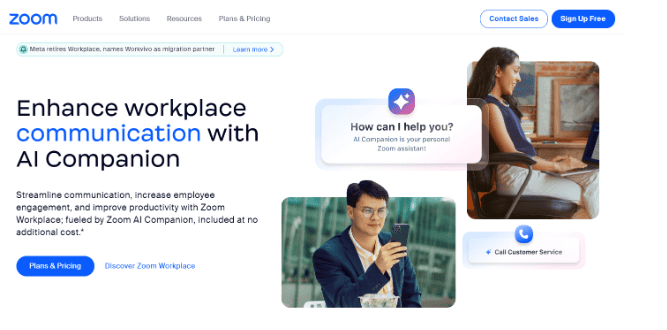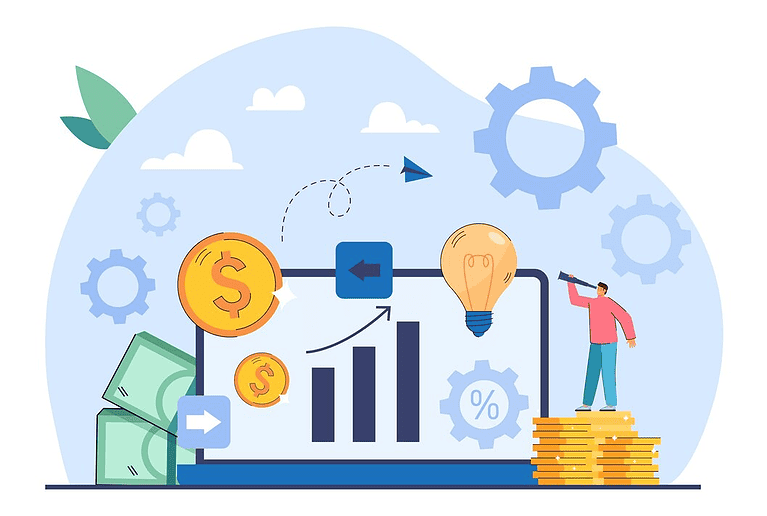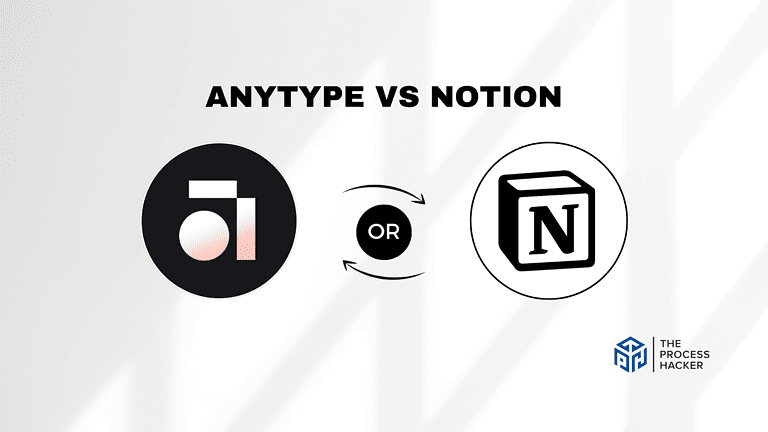MVP in Mobile App Development
Building a minimum viable product (MVP) is an essential first step for any startup founder looking to gain traction and test their mobile app idea without investing much money.
Developing an MVP aligns with the lean startup methodology of testing hypotheses iteratively at the lowest possible cost. Done right, an MVP allows you to gather real user feedback to help determine what features are most valuable before a large investment is made.
However, MVPs aren’t always easy to plan and execute. In this post, I’ll share lessons I’ve learned from building multiple MVPs of my own mobile apps and helping other founders launch theirs.
From scoping the right features to designing an intuitive user experience, I’ll walk through the key steps and considerations to help you build an effective MVP that will be worthwhile for both your customers and your business.
What Is A Minimum Viable Product (MVP)?
A Minimum Viable Product (MVP) has just enough features to be usable by early adopters and to provide feedback for future development.
Eric Ries first coined the term in his book The Lean Startup, and has since been widely used in the software development and startup industries. Creating an MVP aims to launch a product quickly with minimal resources so that the MVP Development Team can test market demand and get feedback from early users.
An MVP helps the team learn from the market, understand the user’s needs, identify areas for improvement, and iterate on the product until it becomes fully functional and meets the target audience‘s needs. Therefore, an MVP is an essential tool for startups and software development teams that want to create user-centric and market-fit products.
Why Should You Make An MVP In App Development
An MVP allows you to test your app idea with real users, gather essential feedback, and make improvements without spending excessive resources.
It’s a strategic approach to validating your app’s market demand, understanding your audience’s needs, and refining your product accordingly.
This method ensures that you’re not just guessing what your audience wants but delivering a product that they find valuable.
Here’s a list of the benefits why you should make an MVP in app development:
- Faster Time to Market
- Reduced Development Costs
- Enhanced User Feedback and Validation
By adopting an MVP approach in app development, you embrace a method that not only streamlines the process of bringing your app to market but also maximizes the efficiency of your resources.
It’s a practical, user-centric strategy that prioritizes real-world validation and iterative improvement, positioning your app for greater success and relevance in a crowded marketplace.
Faster Time to Market
An MVP allows you to launch your app quickly by focusing on essential features and avoiding unnecessary complexities. This rapid deployment lets you gather valuable user feedback early on and iterate based on market demand, giving you a competitive edge and speeding up your path to success.
Reduced Development Costs
Since MVPs are stripped-down versions of the final product, they require less time and resources to develop. This results in lower development costs and allows you to allocate resources more efficiently, investing in the features that will have the most impact.
Enhanced User Feedback and Validation
By releasing an MVP to a small group of users, you can gather real-time feedback on the app’s usability and functionality. This feedback is invaluable for identifying areas of improvement, fine-tuning the app for mass adoption, and ensuring your final product aligns with what your audience truly wants.
Only the Essential Features of an MVP
1. Core Functionality
This is the heart of your app idea. Define the absolutely essential features that solve your target audience’s primary problem. For example, if building a ride-hailing app, the MVP’s core functionality would be to connect riders with drivers, facilitate bookings, and perhaps offer a basic payment system.
2. Basic User Interface (UI)
The MVP’s design should be simple and intuitive. Focus on usability, ensuring the core functionality can be accessed easily, and the navigation flow is logical. Don’t get bogged down with sophisticated visuals—you can refine the aesthetics in later iterations.
3. User Feedback Mechanism
Incorporate tools or channels to collect feedback directly from users. This could include surveys, in-app feedback forms, or even a simple email address for users to reach out with suggestions and issues. This feedback loop is essential for understanding how well your MVP addresses user needs and what improvements they want.
4. Scalable Technology Framework
While the MVP is streamlined, build it on a tech stack that can easily handle growth as you add features and handle more users. This helps avoid costly infrastructure overhauls later. Choosing flexible and scalable technologies allows your app to evolve smoothly as your MVP gains traction.
What Are the Steps to Implement MVP in Mobile App Development?
Having a streamlined and efficient process for implementing MVP in mobile app development. The following steps include thorough market research to identify the target audience and their needs, brainstorming ideas for essential features, prioritizing those features based on importance and feasibility, and creating a prototype for user testing.
Now, let’s take a closer look at each step in detail:
#1) Market Research and Identification of Core Features
Before developing an MVP, thorough market research is essential to understanding the needs and preferences of the target audience. This research might include competitor analysis, surveys, or direct interviews with potential users.
Once the target market is identified, developers can prioritize the core features that address the most pressing pain points. This focus ensures you’re not just building something technologically feasible but a product people truly need and will use.
#2) Prototyping and Development of the MVP
Once the core features are identified, developers can proceed to prototype and develop the MVP. Prototypes can range from low-fidelity wireframes to interactive mockups that simulate the app’s basic functionality.
The focus should be on delivering a functional product with minimal features, allowing for quick iteration based on user feedback. Streamlined development at this stage saves both time and money.
#3) Testing and Gathering User Feedback
After the MVP is developed, it’s crucial to release it to a small group of beta testers and gather feedback on its usability and performance. Methods like surveys, user interviews, or in-app feedback tools can be invaluable.
This feedback will help identify any issues or shortcomings that must be addressed before the full-scale launch. The success of your product hinges on understanding how real people interact with it.
#4) Iterative Improvements Based on Feedback
Based on the feedback received from beta testers, developers can make iterative improvements to the MVP. This may involve adding new features, refining existing functionalities, or addressing any usability issues identified during testing.
It’s important to remain flexible and responsive to the data gathered, ensuring the final app aligns with genuine market demand. The MVP philosophy is about constant evolution fueled by customer feedback.
Challenges and Considerations in MVP Development
Balancing Feature Prioritization and Simplicity
One of the biggest challenges in MVP app development is striking the right balance between including enough features to provide value to users, risk of app failure, and keeping the product simple and easy to use. This requires careful prioritization and a deep understanding of user needs.
Managing Stakeholder Expectations
Stakeholder expectations can often be a hurdle in MVP development, as there may be pressure to include additional features or expedite the development process. It’s essential to manage stakeholder expectations and communicate the rationale behind the MVP approach.
Technical Debt and Scalability Issues
Another challenge in MVP development is the risk of accumulating technical debt, which can hinder future scalability and performance. It’s crucial to strike a balance between delivering a quick MVP and laying the groundwork for future scalability and maintainability.
Best Practices for MVP Development
Focus on Solving a Specific Problem
The key to a successful MVP is addressing a specific pain point or problem the target audience faces. By focusing on solving a specific problem, developers can deliver maximum value with minimal effort.
Keep the MVP Simple and User-Centric
Simplicity is key in MVP development. Developers can minimize complexity and ensure a seamless user experience by keeping the MVP simple and easy to use.
Utilize Analytics and User Feedback for Iteration
Analytics and user feedback are invaluable tools for iterating on an MVP. By closely monitoring user behavior and gathering feedback, developers can identify areas for improvement and prioritize feature enhancements.
Examples of Well-Known and Successful Apps that Started as MVPs
Airbnb
Initially launched as a simple website allowing users to rent out air mattresses in their living rooms. This focused offering tested the basic concept of connecting people looking for affordable lodging with those willing to offer it.
Over time, it evolved into a global platform for booking accommodations ranging from spare rooms to entire houses and villas. Its MVP success proved a market for alternative accommodations and informed the company’s expansion strategy.
Dropbox
Started as a basic file-sharing and storage service, offering users a simple solution for syncing files across devices. This core feature tackled the pain point of limited portable storage capacity in the early days of cloud computing.
Today, it’s one of the most widely used cloud storage platforms globally, with robust collaboration features and integrations into countless systems. Their MVP demonstrated the need for seamless file sharing and paved the way for their platform’s growth in both features and user adoption.
Final Thoughts on MVPs in a Successful App Development Process
But don’t just take my word for it – why not give the MVP a try yourself?
Whether you’re an aspiring app developer or part of a seasoned team, deciding to build an MVP into your process can provide valuable insights and ultimately lead to a more successful and impactful product.
So go ahead, take that leap of faith, and create an MVP—who knows, it could be the game-changing move for your next big idea!
As always, remember to stay flexible and open-minded throughout the process. User feedback is key to shaping your final product, so always be ready to adapt and make changes based on their input.
Remember, Rome wasn’t built in a day, and neither is a successful mobile app. But with an MVP approach, you’re one step closer to making that dream app a reality.
So, let’s end this blog post on an optimistic note—go forth and conquer the world of mobile app development with an MVP! Trust me; you won’t regret it. I can almost guarantee that you’ll see quicker results, happier users, and, most importantly, more success in the market.
So what are you waiting for? Get out there, gather some user feedback, and create that killer MVP. The world is waiting for your masterpiece!
FAQs for MVP App Development
What is the difference between MVP and a full-scale product?
MVPs are stripped-down versions of the final product, focusing only on the essential features, while full-scale products include all planned features and core functionalities.
How long does it take to develop an MVP?
The timeline for developing an MVP varies depending on the complexity of the app and the availability of resources. However, it typically takes a few weeks to a few months.
Can an MVP be monetized?
Yes, an MVP can be monetized through various means, such as subscription models, in-app purchases, or advertising.
What happens after the MVP is launched?
After the MVP is launched, app developers gather user feedback and make iterative improvements based on it. This process continues until the app reaches its full potential.
Is MVP suitable for all types of apps?
MVP is particularly well-suited for startups and entrepreneurs looking to test their app ideas in the market. However, it can also be used by established companies to validate new product features or enter new markets.







